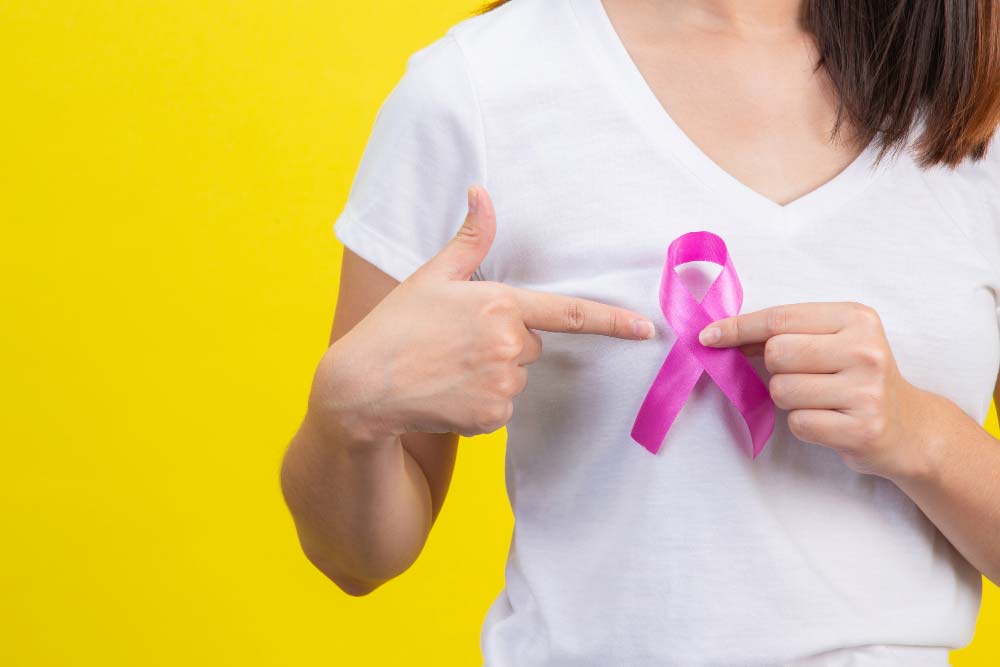Table of Contents
What is a Breast Cancer?
Breast cancer is a disease in which malignant (cancer) cells form in the tissues of the breast. Breast cancer most often occurs in women, but men can get it, too.
Most breast cancers are carcinomas that begin in the cells lining the ducts (breast lumen) or lobules (glandular tissue). Some breast cancers develop from pre-invasive lesions known as intraductal carcinomas. The most common types of breast cancer are ductal carcinoma in situ (DCIS), invasive ductal carcinoma and lobular carcinoma.
Breast cancer can also be divided into two broad categories based on how quickly it is likely to grow and spread: non-invasive and invasive.
Non-invasive breast cancer refers to certain types of abnormal cell growth that have not yet spread beyond their original site or invaded nearby tissue or lymph nodes. Non-invasive forms of breast cancer include ductal carcinoma in situ (DCIS), lobular carcinoma in situ (LCIS) and inflammatory breast cancer (IBC). In many cases, non-invasive forms can be treated with surgery alone or with surgery followed by radiation therapy or hormone therapy.
Warning signs of Breast Cancer
Breast cancer is a serious disease that can lead to death if it is not treated. Early detection and treatment can save lives. The following are warning signs of breast cancer:
- A lump or thickening in the breast, especially if it’s hard to the touch, feels different from surrounding tissue and persists for more than two weeks. A lump may also be accompanied by nipple retraction, which occurs when the nipple pulls back into the breast.
- Swelling in one or both sides of the breast.
- Inflammation (redness) of the breast, nipple or skin around it. This is more common in inflammatory breast cancer than in other types of breast cancer.
- Skin irritation around the nipple that does not heal within two weeks or lasts longer than usual for an infection.
- A rash on your chest or underarm area that does not go away within two weeks or lasts longer than usual for an infection
Breast lumps or lumpiness
Breast lumps or lumpiness are common, but you should tell your doctor about any lumps you find. Here’s what to expect during a breast exam and how to know if it’s time to make an appointment with your doctor.
If you notice that one of your breasts feels different than the other, or that there is a lump in one of them, see your doctor right away. Breast lumps don’t always mean cancer, but they should be examined by a health care professional as soon as possible.
Breast Lump Symptoms
A breast lump can be hard or soft, tender or painless, and moveable or fixed to the skin. It may feel like a solid mass or like a fluid-filled cyst (a fluid-filled sac).
Breast lumps can be caused by:
Inflammatory breast cancer (IBC) — This type of breast cancer usually occurs in younger women and has no relation to breastfeeding or hormones (estrogen). Most people with IBC have no other risk factors for this type of cancer. IBC is more common in African Americans than Caucasians.
Gynecomastia — This condition causes males to develop large breasts due to too much estrogen in the body.
Nipple discharge
Nipple discharge is a common breast complaint in women.
It can be white, brown or yellow in color and may vary from light to heavy.
Nipple discharge is not always a sign of breast cancer. However, if you notice any breast changes or nipple discharge that lasts longer than four weeks, make an appointment to see your doctor.
When is nipple discharge a concern?
Nipple discharge can be normal, but it can also be a sign of infection or another condition that needs medical attention. If you notice any of the following signs, see your doctor:
Changes in the color or consistency of the discharge — such as turning bloody or greenish-yellow (jaundice)
A change in amount — such as increased or decreased discharge.

